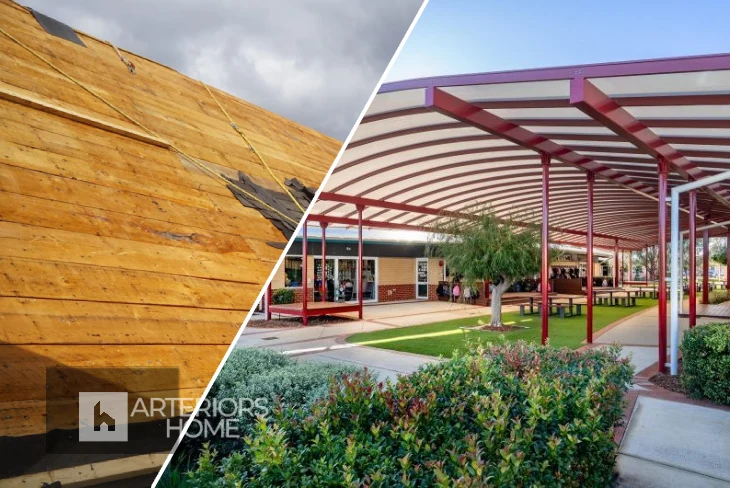When it comes to roofing materials, choosing the right one for your home is crucial. With so many options available, it’s easy to feel overwhelmed. Among the popular choices is polycarbonate roofing, a modern alternative that has gained traction in recent years.
Let’s compare polycarbonate roofs with traditional materials like asphalt shingles, metal, and clay tiles, giving you all the information you need to make an informed decision.
Durability and Longevity
Durability is a significant factor when choosing a roofing material. Polycarbonate roofs are incredibly tough and can withstand harsh weather conditions, including heavy rain and hail. They’re designed to be impact-resistant, ensuring they won’t easily crack or break. In contrast, while traditional materials like metal are also durable, asphalt shingles tend to have a shorter lifespan—usually around 15 to 30 years—depending on the quality and maintenance. Clay tiles, while long-lasting, can be prone to cracking if not installed correctly. In terms of maintenance, polycarbonate roofs require minimal upkeep. Check out this polycarbonate roof repair guide.
Energy Efficiency
When it comes to energy efficiency, polycarbonate roofs shine brightly. They offer excellent insulation properties, helping to keep your home warm in winter and cool in summer. Many polycarbonate options are designed with UV filters, protecting your interiors from harmful rays while reducing glare. Traditional roofing materials vary in energy efficiency; for example, metal roofs can reflect heat effectively, but asphalt shingles may absorb more heat, leading to higher energy bills. Clay tiles provide decent insulation but can also contribute to heat retention in hot climates. Overall, polycarbonate roofs often emerge as the more energy-efficient choice.
Cost Comparison
Let’s talk money. The initial installation costs of polycarbonate roofs can be higher than those of asphalt shingles but are often comparable to metal and clay tiles. However, it’s essential to consider long-term costs as well. Polycarbonate roofs tend to require less maintenance and offer better energy savings, which can translate into lower utility bills over time. Traditional materials like asphalt shingles may be cheaper upfront, but their shorter lifespan and higher maintenance needs can lead to increased costs in the long run. When evaluating your options, think about both immediate and future expenses to determine the best value for your budget.
Aesthetic Appeal and Design Flexibility
Aesthetics matter when it comes to roofing. Polycarbonate roofs offer a modern look with a range of design options, including clear and tinted panels that allow natural light to flood into your space. They can create stunning architectural features in your home. Traditional materials also have their charm; asphalt shingles come in various colors and styles, while metal roofs can offer a sleek, contemporary appearance. Clay tiles, with their rustic appeal, can add a classic touch to any home. Ultimately, the choice depends on your design preferences and the overall look you want to achieve.
When Roof Repairs Are Not Enough
Many homeowners are tempted to keep repairing their roofs. When there’s minor damage, a quick job might be enough to prevent any damage to the property and keep the cost down. but, there will reach a point where this isn’t enough. You need to know when repairs will cause more trouble than good. Here are some signs that you need a replacement rather than temporary repair jobs.
Continuous Repairs
Some roof repairs can be successful for years. You might not experience another problem. However, if you find that the same issue keeps emerging even after patching it up several times, this is when you should pull the plug. This is a sign that they’re not enough and you risk damaging your property if you don’t take different action. So, this is when a roof replacement will be necessary.
The Age
Sometimes, you have to think about the age of your roof. Materials have different lifespans and the issues you’re experiencing could be down to age. Repairs might not be enough to fix the issue or could cause other problems due to the wear and tear the roof has sustained over the years. So, know when you need to call it a day and completely replace your roof. While it can be more expensive, it can sometimes be the only way to conclude.
Extensive Water Damage
Of course, the roof has an important job of protecting your property. When it’s damaged, this can lead to water problems and leaks, especially after bad weather. If you’re noticing that there’s a substantial amount of water damage, which is also leading to mold and mildew, you need to go further than repairs.
| Material | Durability | Energy Efficiency | Cost | Aesthetic Appeal |
|---|---|---|---|---|
| Polycarbonate | High (impact-resistant) | High (UV filters, insulation) | Moderate (initial cost), Low (long-term) | Modern, flexible design |
| Asphalt Shingles | Medium (15-30 years) | Low (absorbs heat) | Low (initial cost), High (long-term) | Classic, various colors |
| Metal | High (durable) | Medium (reflects heat) | Moderate (initial cost), Low (long-term) | Sleek, contemporary |
| Clay Tiles | High (long-lasting) | Medium (insulation, heat retention) | High (initial cost), Low (long-term) | Rustic, classic |
Conclusion
In conclusion, both polycarbonate roofs and traditional roofing materials have their strengths and weaknesses. Polycarbonate roofing stands out for its durability, energy efficiency, and minimal maintenance needs, making it a strong contender for your next home project. Traditional materials like asphalt, metal, and clay tiles offer their unique benefits, but they also come with varying levels of durability, energy efficiency, and environmental impact.




No Comment! Be the first one.